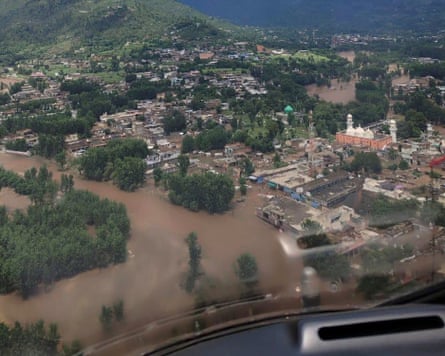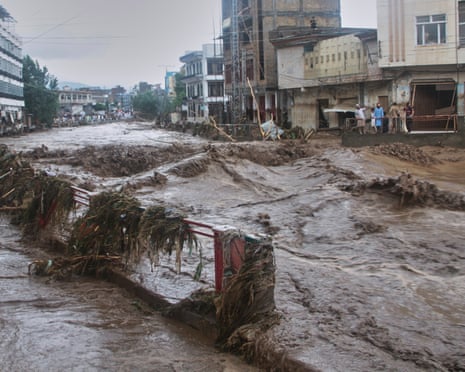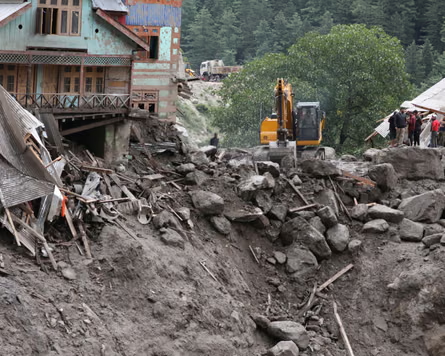Flash Floods Sweep Through South Asia
More than 280 people lost their lives after flash floods struck India and Pakistan following heavy monsoon rains. The destruction was worst in mountainous areas, where sudden surges of water destroyed homes, swept away pilgrims, and even killed members of rescue teams. By Friday evening, the death toll had risen sharply as workers struggled to reach isolated villages buried under mud and rocks.
Pakistan’s Khyber Pakhtunkhwa province recorded the most deaths. Local officials confirmed that at least 243 people died, with 157 of them in Buner district alone. Across the border in Indian-controlled Kashmir, the small village of Chositi was hit badly. At least 60 people were confirmed dead and 80 others were reported missing after floodwaters struck a Hindu pilgrimage site.
Pilgrims Trapped in Remote Village

The tragedy in Chositi unfolded as more than 200 Hindu pilgrims gathered for food at a community kitchen on Thursday evening. Floodwaters surged down the mountain, cutting off the only road to the village. The site serves as the final motor-access point for pilgrims heading to a shrine nearly 3,000 meters above sea level.
One woman described her nightmare to reporters. She said her son was nearly carried away by the rushing waters until army personnel pulled him to safety. However, she still had no word about her missing husband and daughter. Rescue teams worked overnight, setting up makeshift bridges and using heavy machinery to clear debris. Nearly 4,000 pilgrims were evacuated to safer areas.
Rescue Teams Face Harsh Conditions

The ongoing rescue efforts have been slowed by deadly conditions. In Pakistan’s Bajaur region, a military helicopter delivering relief supplies crashed due to poor weather. All five crew members on board, including two pilots, died. This incident shows the extreme risks facing those involved in relief missions.
Authorities in Pakistan said more than 1,600 people have been evacuated from flood-hit areas so far. Since June 26, rain-related incidents have killed at least 556 people across the country. Prime Minister Shehbaz Sharif ordered emergency evacuations, while multiple districts declared states of emergency.
Climate Change Making Floods Worse
Scientists have warned that climate change is intensifying monsoon patterns in the region. According to the World Weather Attribution network, Pakistan saw 10 to 15 percent more rainfall between June 24 and July 23 compared with normal years. The report said that cloudbursts—sudden and heavy downpours in small areas—are becoming more frequent in Himalayan regions.
Pakistan’s worst monsoon season in recent history was in 2022, which left over 1,700 people dead and caused $40 billion in damages. Weather officials are now forecasting more heavy rains in the coming weeks. They have also warned of possible glacial lake floods in the northern mountains, which could worsen the crisis.
Personal Analysis
The floods in India and Pakistan highlight a painful truth. Extreme weather is no longer a distant problem; it is here now and it is killing thousands. Communities in mountain regions are especially at risk, not only because of their terrain but also because of unplanned development. Villages are often built near rivers and fragile slopes, leaving them exposed when storms strike.
Both countries must rethink how they prepare for disasters. Emergency warnings, stronger housing, and better evacuation routes could save lives. But real change requires global effort. Greenhouse gas emissions continue to heat the planet, and until this is addressed, tragedies like these will only become more frequent.
The suffering of the pilgrims in Kashmir and the families in Pakistan’s northwest is a stark reminder. Climate change is not just about rising temperatures or melting ice. It is about mothers searching for their children in the mud, helicopters falling from the sky during rescue efforts, and villages washed away overnight. The human cost is heavy, and it will keep rising unless leaders act.
Sources: worldweatherattribution.org

